When you purchase through links on our site, I may earn an affiliate commission. Here’s how it works.
What is the best online singing course? I purchased dozens, field-tested them and chose the best. What makes them stand out compared to others in terms of teacher background, content and teaching style? How can these apps be integrated in a plan for online singing lessons?
See, online tools (for example karaoke apps) can be great for a singer. But good online courses are complimentary to personal lessons or even cover things that personal lessons don't. They can offer the bigger picture that individual lessons not always do. A good singing course can be a tool to keep your vocal progress on track.
In this review article I am not here to rate the courses or judge the vocal technique that the course creators teach. Different teachers teach differently and I acknowledge that. Having said that, I only include courses whose creators I trust to know what they are doing - so the courses I recommend leave you in good hands.
Note: If you’re looking for structured online courses (video lessons mostly), this guide compares the best options. For a complete roadmap of how to learn singing in general, see my step-by-step guide
The Make Singing Click Club
Who is teaching: Linor Oren, aka: Me (I know, no shame!)
Volume included: 5 modules, 70 (short) lessons, 2 personal feedback opportunities
Specialties: Learning in groups through regular online group meetings, removing mental and physical blockages
Price: subscription based
The approach: a social activity
This course is more than just the online video material. It also consists of online group calls where you learn from me, ask me questions, for example about what vocal exercise is best for you right now. In groups, you are held accountable and get inspired by each other. All this should not be a lonely activity!
My didactic approach is to teach you mostly what NOT to do. Most of what we do while singing interrupts our airflow and limits our vocal instrument! One you get bad habits (I call these: 'sticks in the wheel') out of the way, you have the key to unlock your voice.
Bad habits can be mental (thoughts that stand in the way, wrong judging system) or they can be physical (muscle tension or air pressure). So I operate in two main channels: improving the mentality of singing and featuring bodywork in our singing.
After that - any technique you have learned anywhere is 1000% more likely to work.
About bodywork
Bodywork is crucial for a free singing or speaking voice. Any method which gets your body to organise in a relaxed and grounded way - will empower your voice. And lack thereof will make everything more difficult!
A few examples of such methods are Yoga, Alexander Techniques and Pilates. I use them all in the course to troubleshoot singing difficulties and refer you to experts/tutorials who teach those methods.
Interactive tutorial for every chapter
This is not just a theoretical course where you watch and get wiser. Every few lessons you will have a tutorial, where I sit at the piano and guide you through vocal exercises implementing everything you have learned in the chapter. A fun and practical way to put things in your system!
Course content
The course has 5 modules.
- First module is all about the mentality of singing and practicing: replacing self-deprecating habits with productive ones: choosing a suitable song for you, and providing a motivating way of practicing.
- Second module teaches anatomy and conducts a full-body scan to identify your main vocal issues. Then you send me a clip of your singing for analysis, and I point you to the relevant lessons in the course, which will solve your issues.
- Third module teaches how to solve the vocal issues you have found with your teacher and/or through my feedback, going through the body parts one by one and releasing them.
- Fourth module teaches the most popular vocal skills such as range, power and support. At the end of which you are asked to send a second video for analysis.
- Fifth module talks about the stage and gives career advice.
About the teacher
I'm a classically trained professional singer, and have toured internationally.
For 18 years I have been teaching voice and coaching singers of all styles and levels, working on their stage skills as well.
My goal is to cure singing insecurities and disrupt the weekly voice lesson business model. We are in a different day and age now. Online gives us the option to work in groups and to have my material accessible to you all the time.
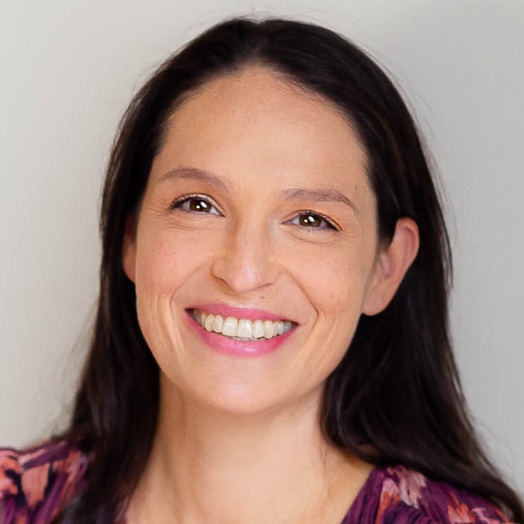
Conclusion Make Singing Click Club
The Make Singing Click Club is part online course, part online community where I inspire the club members to achieve the transformation from being a 'little mouse' to falling in love with your voice.
This online singing course will replace bad mental habits ('that sounded bad, I guess I suck!') with a clear and motivating system. It cleans up unproductive singing behavior and makes you gain more control over your singing. You're closer to being a good singer than you think.
It will remove muscle tension and mental tension. If you follow this system, it will save you a lot of money on singing lessons. The reason for this is that the program will show you how to make the best of any technique you learn in any lesson and internalize it and keep it for the long haul.
Cool Perks of the Make Singing Click Club
From Zero to Singing Hero
Who is teaching: Singing Carrots team (structured beginner course)
Volume included: 1 beginner course, 4 weeks, multiple daily exercises and optional challenges
Specialties: Foundational singing skills, vocal range, pitch accuracy, breathing, resonance, vocal registers, interactive pitch training game
Price: Free intro part (initial assessment and tests). Membership offers all features, for $39.99 per quarter.
4-week online singing course for beginners
“From Zero to Singing Hero” is a structured, beginner-focused online singing course.
The course is built around gamified progress tracking. It begins with benchmark recordings to measure growth and uses tools like pitch accuracy and vocal range tests. A points system rewards practice, while a statistics dashboard tracks metrics like practice time and vocal development. The structure includes tasks such as video recordings, tests, and explainer videos, and learners are encouraged to submit a starting video for accountability support and a small reward.
It's designed to build foundational skills from the ground up, including breathing, pitch accuracy, vocal resonance, and handling vocal registers and breaks. The course progresses over four weeks, with daily exercises, short warm-ups, and optional challenges to earn points in the interactive Pitch Training Game.
A standout feature of From Zero to Singing Hero is how it seamlessly integrates theory with practical exercises through the interactive Pitch Training Game. As students learn new concepts—like pitch, resonance, or vocal registers—they can immediately apply them in exercises, reinforcing understanding and making practice both engaging and effective.
The course encourages recording a “Before” video to track progress. Vocal range and pitch accuracy tests are integrated throughout to help measure improvements. Each week introduces specific skills:
- Week 1: Breathing for Singing – Focuses on inhalation, controlled exhalation, and combining both to support your voice while practicing songs.
- Week 2: Pitch & Intonation – Covers half steps, whole steps, major thirds, perfect fifths, octaves, and full scales.
- Week 3: Vocal Resonance – Develops chest, head, and mix resonance for richer tones.
- Week 4: Vocal Registers and Vocal Breaks – Teaches awareness and smooth transitions between registers, using exercises and songs.
Optional challenges in the Pitch Training Game provide extra points and help reinforce learning. After finishing, students can compare “Before” and “After” recordings to see progress.
Further training
While the course primarily targets beginners, the integrated tools, such as vocal range tests, pitch accuracy monitoring, and custom melody practice, offer opportunities to continue improving beyond the four-week program. The emphasis on daily practice, measurable progress, and interactive learning ensures that students gain a solid foundation before moving on to advanced topics. There's also the option to book a 1-on-1 lesson with a vocal coach.
Conclusion: From Zero to Singing Hero
An aspect of this course I like is its focus on self-awareness and progress tracking. Starting with a “before” video and using tools to monitor growth is a great idea. Their “carrot points” system adds a playful element that encourages small wins and steady motivation.vThe statistics dashboard could be motivating for learners who are driven by data. While I also emphasize accountability, I would ideally focus more on clarity through personal feedback by a teacher rather than metrics alone.
This course could work well for learners who enjoy a self-guided, data-focused approach. With tools to track pitch, range, and practice time, it offers clear metrics for those motivated by numbers. Its focus on stats may help with motivation, but risks slightly missing the deeper goal of expressive singing.
All in all, this course is well-structured, engaging, and highly interactive. Beginners benefit from its clear progression, short daily exercises, and integrated feedback mechanisms.
Perks of From Zero to Singing Hero
30 Day Singer
Who is teaching: Multiple teachers
Volume included: 3 beginner courses, 30 lessons each. Advanced and technique sections, dozens of mini courses in each.
Specialties: Different styles, multiple perspectives on teaching, combined live webinars
Price: $29.95 /month or $129 /year
Online singing courses for beginners
Included are three online singing courses for beginners, by three different teachers. So you get three beginners' courses for one. You can do them all, or choose.
Each course can take 30 days and be divided into 4 weeks, building up from the fundamentals (like posture, breathing, warm-up) and finishing with performance advice. Like a crash course. You can, of course, take longer, and are encouraged to take your time.
- Beginners' course by Jon Statham
It's an intro to the entire course platform. personally would follow Jon's course for theoretical and musical knowledge. - For vocalisation I recommend Camille’s and Jonathan’s vocal exercises.
- Beginner’s courses by Camille van Niekerk and Jonathan Estabrooks
The two teachers use the same syllabus, but they deliver the material a bit differently, naturally. It’s nice to have two approaches to the same content, and also to be able to follow a male or female teacher, if you want their voice type to be more similar to yours. Also nice to see the instructor and the keyboard/guitar they are playing simultaneously displayed. Only in Camille’s beginner’s course: every time you are given an exercise in a lesson you will get an audio track of that exercise (or complete warm-up) you can follow. Each track comes in four versions: Soprano, Alto, Tenor and bass.
About the author

I’m Linor Oren, founder of SingWell. I have an opera background and in the past I've performed on stage. I've taught hundreds of students how to find their authentic voice. What I’ve learned is that singing isn’t about being “born with it” — it’s about unlocking what’s already inside you with the right tools and guidance. My passion is helping singers at every level grow in confidence, technique, and joy, so they can sing with freedom and expression.
Further training
There are two other sections: Advanced Level and Tricks & techniques.
In the advanced section there are 18 tutorials, which are actually mini courses of about 4 lessons each! They include: how to sing in different styles (and your own style), sing in a group, Christmas carols, extending range, runs&riffs, belting, combining singing and playing (popular request amongst my students), performance advice. The tutorials are taught by multiple different teachers.
Tricks/Techniques
14 mini courses (called tutorials). Breath, range, tone, vibrato, harmonising, pitch.
The advanced section seems to be focused on style and performance advice and the trick/technique is more technical voice tips-oriented. They are both essentially extending to further technical elements they want to teach, and then adding musical and presentational topics.
Common topics between the advances and tricks sections
There are a couple of topics on which you will find tutorials in both the advanced and the trick section. What’s the difference then?
Taking the Belting tutorials from both sections:
Mark Mekailian (in advanced): nice yelling exercises and baseball pitch metaphor (throwing from the back). A couple of vocal exercises meant to create the belt quality sound.
Camille (in techniques): starting with body breath exercises. Chest vs. mixed voice belt. Caution about vocal health. A couple of vocal exercises meant to create the belt quality sound.
*The 2 tutorials are two individual approaches to belting. They have some common principles, but give different exercises and ways to achieve the belting quality. But I don’t see a difference in the sense that one should belong to advanced and one in tricks and techniques. Perhaps they want to make sure we don't miss this important skill!
Same goes for the range tutorials: we have Camille (in Advanced) and Abram Poliakoff (in techniques). Different exercises but same principles.
Conclusion 30 Day Singer
It's a platform full of content, but it is pretty well-structured. The lessons are slow with a couple of exercises on each, which is very user-friendly, encouraging gradual learning. The extensive content covers most, if not all desired vocal topics, and then some. You learn musical theory and ear training, styles, accents. There is something to learn no matter what kind of singer you want to become.
Perks of 30 Day Singer
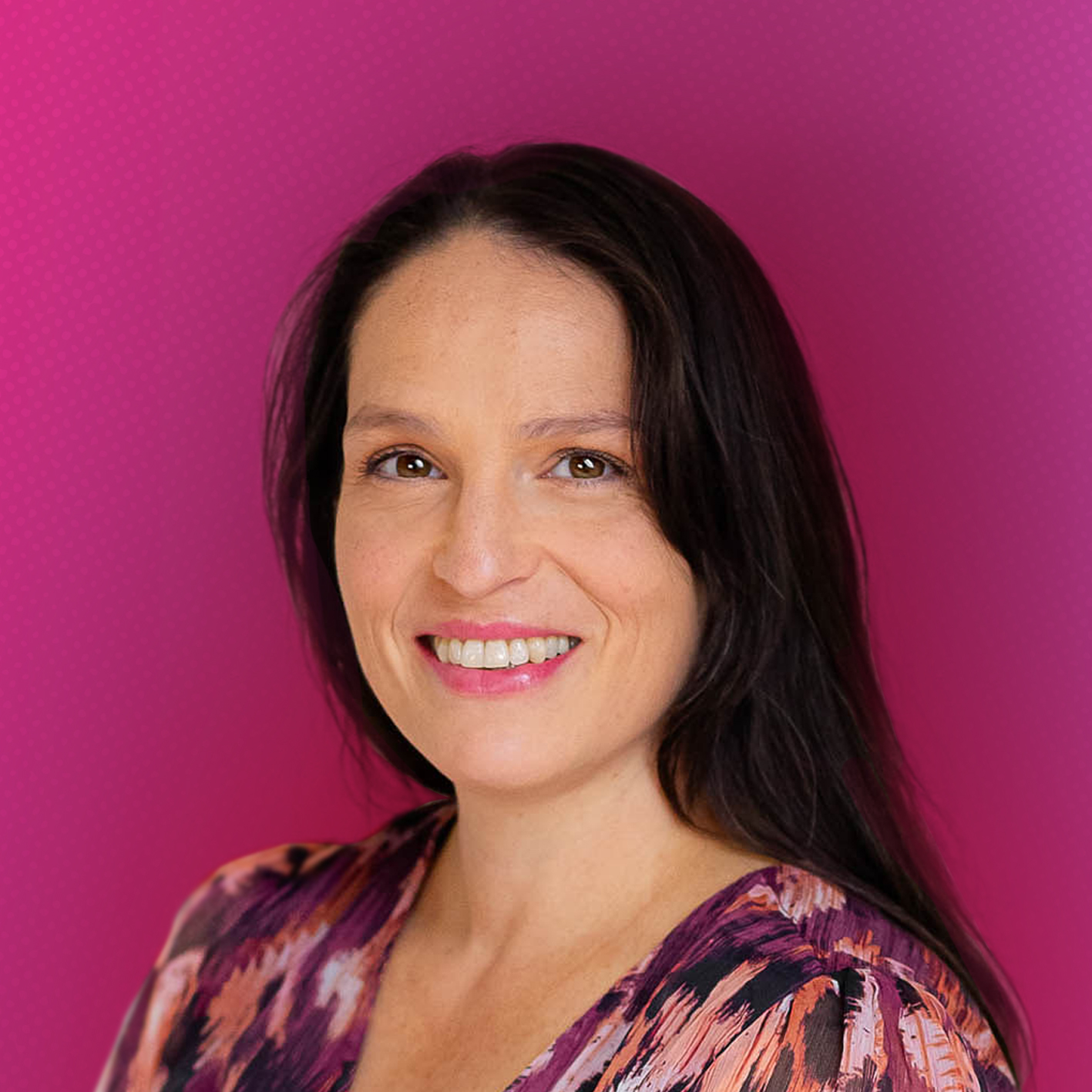
"
"A good online singing course does not replace your voice teacher — it expands what lessons can do. It connects the mind, the body, and the art of singing into one continuous practice."
The Vocalist Studio (TVS)
Who is teaching: Robert Lunte
Volume included: Five Modules (called "stages") + a bonus module, over a hundred video lessons.
Specialties: Science-based vocal technique; oriented towards power in your voice (mainly for contemporary singing)
Price: $297 or $329 for two courses (Pillars of singing&Belting in your head voice)
Course set-up and practice tracking
This online singing course is accessible on your laptop, but also on an app on your phone called Kajabi, which allows you to use the material quicker. This makes smartphone access more handy than usual.
The search option in this course is very handy: you can look for a word and it will point you to the relevant lessons.
Tracking your progress:
- A quiz at the end of the chapter is mandatory, and will unlock the next stage.
- Peer review of lessons: you are encouraged to share your clips with the community of students and get feedback from them. Great way to be held accountable and get things done.
TVS is also supported by a book (a massive, impressive book), also called The Four Pillars of Singing, which you can either buy as a hardcopy or read online through the course.
The start is about the set-up: recommendations about how to build the practice environment, gear and products for amplification.
Style orientation
Most instructions in the course point towards contemporary singing. However, the technique is applicable to all singing styles. Even classical singing will use the same principles and techniques (without the need for most of the gear, obviously), especially anything to do with vocal cord function, free sound mechanism and support.
Content
This is a long and thorough course. There is extra emphasis on vocal onsets (the beginning of the sound, which determines the quality of the rest of the sound); visualisation of singing vowels with colors (!); creating combination of vocal techniques as singing setups (as in, what you need to have in mind and in your muscle memory before starting the sound).
First 1.5 chapters include set-up, terminology and principle lessons. Vocal elements such as jaw positions (embouchures) and tongue positions, vocal fold mechanisms. Exercises and warm-ups are introduced in the middle of chapter 2.
Super helpful stuff:
- Laying the foundation of how often and how long to practice.
- Showing how to work with a mic to prevent tension - good, important!
- List of vocal terms definition used in the course.
- Sign language! Robert’s way of communicating certain vocal instructions in the context of an online singing lesson, the signs are also used in the course.
- ITRs: Integrated training routines: combinations of exercises for different vocal goals and making your own routines.
- A long library of additional vocal exercises
- Vocal effects such as distortion, screaming
- The training page: another way to quick access all the routines and exercising, along with reminders for the practice structure. Robert is demonstrating - just sing along!
- Audio files for practicing the exercises: Female and male versions (starting in different keys) as well as different speeds.
Teaching style
Robert teaches in a flow speech, improv-style yet coherent manner. He also demonstrates the techniques he teaches, sometimes performing for the camera (which is much fun).
His style of presentation is extroverted, charismatic, sometimes amusing.
Pedagogical approach
TVS teaches science-based up-to-date vocal techniques. He obviously takes his methodology very seriously, making it structured in his unique way which will get you sucked into his studio language.
Important to know:
Robert will tell you when you need to sing along with him, or when you just need to watch. If he’s demonstrating and not inviting you to join, don’t. You might have not prepared properly for that yet. Jumping straight to singing along difficult exercises is not good for your voice. So take it step by step: When Robert teaches a certain technique or exercise which involves a few elements - Those would all be separately explained either on that lesson, or on another. Make sure you have covered all the lessons which teach all the elements, then go ahead and follow the exercise.
Conclusion The Vocalist Studio
This course is great for throughly building up technique and a strong instrument, as well as learning about the physiology of the voice. Even though it seems on the surface that it's for rock and pop singing only, I personally liked many of the techniques there as a foundation for classical singing.
Following this course will give you solid abilities, and you will be supported and commented on by other students, which keeps you on the right track.
Cool perks of The Vocalist Studio
Voice Essentials 1
Who is teaching: Dr. Dan
Volume included: 10 Modules, 3 hours of video lessons
Specialties: Contemporary singing, focused and task-specific technique establishment
Price: $197
Course Approach
The course is concentrated on selected exercises for specific vocal skills. Dr. Dan guides you to give each of them time so they can sink in properly.
You are also encouraged to record two songs of your choice in the beginning and end of the course, and there’s a Facebook group where you can (but don’t have to) share these. That's a great idea, you can see you improvement after going through the course!
The technique taught here is indeed essential, and quite fundamental, and the practice is guided steadily. The "building blocks" taught in each lesson are built up so you are sure to make a lot of progress.
Holding you accountable, making sure you succeed
You are not just one-sidedly deciding what and when you are watching which part of the course. There is a way of doing the course, and it will check with you if you are indeed doing it.
Intro to every module instructs the new relevant length and frequency of the practice, you start with a short practice and add time to it every week.
The course demands feedback on your practice progress, and which exercises helped you or were most enjoyable. This requires accountability from you to do the course properly, practice and not skip important things.
Each week you get a "friendly reminder" through email, showing you your progress and what you still have left to do.
Structure and content
The interface and design is very cool: you get a main video giving the main lesson, then value-adding and supporting videos for extra guidance. Supporting audio tracks of the exercises and pdf of the lessons. A quiz to sum it all up.
The first module is free, to give you an impression of what the course is like. The other modules are constructed similarly to the first.
Every module starts and ends with a mandatory quiz, which makes sure you pay attention and follow the course. If you get the answers wrong you are corrected and can then retake the test, which guaranties you cannot fail.
Vocal technique
All the vocal techniques in the course are built up gradually. The next one in addition to the previous one, etcetera. Extra attention is given to twang, belting and breath management.
While gradual and focused, the course is quite demanding. It brings you to quite extended abilities, if you follow the exercises.
Areas of focus chart - UNIQUE to voice essentials
This chart, which is featured in every module, tells you on which vocal aspects you should focus on with the exercises given. The chart will show you on a scale to which degree a certain aspect is important.
The vocal aspects indicated in the chart: Body Alignment & Tension), Breath Management, Channel (Vocal Tract), Phonation (Onset & Core Tone), Resonance (Registers & Placement), Pitch (Intonation), Loudness (Dynamics & Management), Articulation (Consonant & Vowel).
Teaching style
The course feels personable and engaging. Dr. Dan is speaking very professionally and approachably.
The level of physiological description here is very high: I as a voice teacher learned a lot. The quiz is a good reminder of all the terms and functions you learn.
There’s a discussion section on the side! People can post a question and Dr. Dan answers.
Important, to make the best of the course
It seems like this course gives you what Dr. Dan finds to be some fundamentals of singing. Giving a mixture of teaching forms (video, text, charts, worksheets). I believe the sum of the parts will give the desired outcome. Do exactly as told.
It is vital to watch the videos, not only listen, and read the descriptions on the screen and under all exercises. They give important pointers.
More potential to advance
If you follow down the rabbit hole, every video leads you to more videos dealing in more detail with necessary and relevant tips. For example: after giving a twang on vowel exercises, Dr. Dan warns this exercise may cause one to use unnecessary tension, and points to a video about tension management, leading from there to a 10 video playlist on releasing different muscle tension in the body! Now that's thorough work.
About Dr. Dan
Dr. Dan has twenty years of teaching experience and 25 years of performance experience. He is specialised in contemporary singing.
Conclusion Voice Essentials 1
The vocal work in this course is essential. It is and important if you want powerful, effortless vocal production.
You are given a well-guided path to building vocal technique, accompanied by solid vocal physiology education and working on your songs in parallel. With support from Dr. Dan himself in the comments and other students in the Facebook group.
If you follow this course to the T, I’m sure it will take you far. For serious and passionate people!
Perks of Voice Essentials 1
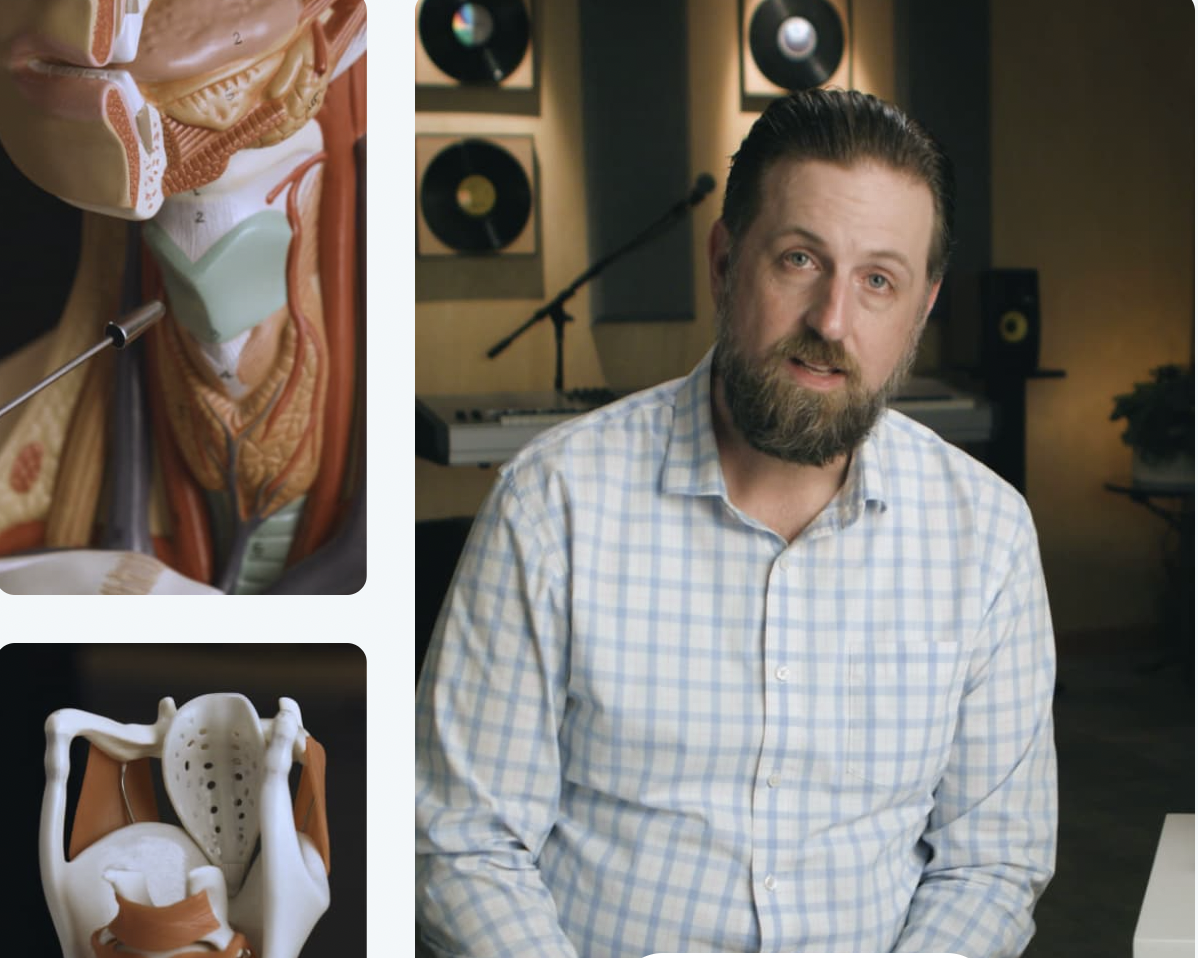
How the Voice Works
Who is teaching: Dr. Matt Edwards, DMA
Volume included: 9 Modules, plus 5 bonus modules, a few lessons in each
Specialties: Vocal anatomy, function and application
Price: $197
Course Approach
The premise of the course is that when you get to know your instrument intellectually - that helps with the execution of vocal technique. Also, Matt, the instructor, claims that you can learn to sing any style if you know the vocal components. I couldn't agree more with both points.
The course gives a detailed, easy to follow layout of the vocal anatomy and function, pairs it with additional resources and some unique features that we'll go over below.
Structure and content
There are short modules for the main structure, showing and teaching about the different parts of the instrument.
In the first introduction to the instrument structor, Matt uses a deer grunter and demonstrates how different parts of the voice impact its quality and pitch. It’s actually funny, loved it.
After explaining the overall structure of the vocal instrument, Matt goes on, very wisely, to show the posture and how it affects the voice. You know how much I agree with that approach... He also gives a list of methods which help align the posture and release muscle tension.
Larynx is by far the best anatomy lesson I have ever seen. The model is beautiful, and the explanation was easy to follow and made all the sense.
Singers: everybody needs to know this stuff - and Dr. Edwards explains it perfectly and in an accessible way.
Combining vocal exercises
Along the course there are breath and singing exercises, which in the context of understanding the body make a lot more sense than introduced separately.
For example: explaining about the ribs and diaphragm + practicing extended exhalation. Or: explaining about the larynx and vocal folds, then teaching belting, head voice, mixing etc.
[one thing I slightly differ from the course strategy - is that I believe one should start by working on the vocal cords and then move on to the diaphragm area. The course taches the diaphragm/rib area first, but they do make it clear that the vocal cords have a role in regulating the breath, too]
Towards the end we get a quick lesson about the effect microphones have on the voice. Important to know.
Additional resources
At the end of every chapter there is either a document with more information or a video with a lecture on the topic that was taught, with even deeper exploration.
Bonus material
There are 5 bonus modules, including a guide to finding a vocal coach and an assessment on how you sing, which is very extensive.
To wrap up there is a TON of vocal exercises - in their own app! The exercises are divided by categories of high and low, female and male. A very generous library of exercises for different purposes. So they don’t just give the theory, they make sure you can take action and start applying what you learned.
Featured learning tools
In addition to illustrations and animation movies to demonstrate how the body behaves, the course includes some very helpful and unique softwares and tools:
1) Zygote Body. A program which shows you the human body, removing one layer at a time and exposing the inside of the body. Pairing it, of course, with the names of all the parts and organs. It’s an amazing way to get to know the body. I think I’m stealing this idea 🙂
2) Gorgeous anatomy models. To name a few, Matt shows the body parts on large, detailed 3D models of the torso, the larynx and on a real size skeleton - which is always fun to work with. The larynx may be called 4d (?) because it moves around to show its parts' behavior.
3) The Pink Trombone - A diagram of a cross-section of the vocal tract (including top of throat, mouth, tongue and nasal cavities). A long click on the mouse makes it sing (!) and by sliding the mouse in different direction on a scale you can change the quality of the sound.
4) An app with access to all the vocal exercises which are, by the way, very good! I might add this to the singing app article, even though it's not a stand alone app
Teaching style
What I love about Matt's teaching is that he is showing something on the skeleton, or a model, and then instructs you to experience the different parts and notice how the body moves and is influenced by posture. So you get the cognitive understanding, but then also the kinaesthetic understanding of your body.
Matt is very coherent and speaks in a calm, patient voice. He is serious, all the time, but that just makes the lighter moments funnier 🙂
Most importantly, Matt's teaching style is gradual and thorough - which makes him a very good teacher
About Dr. Matt Edwards
Matt is an Associate Professor of Voice and Artistic Director of the CCM Vocal Pedagogy Institute at Shenandoah Conservatory. His students have performed on and off Broadway, on national and international tours, on TV/Film, and front bands throughout the world.
Conclusion How the voice works
This is a science based course but also gives us a path to implement the knowledge into actual vocal technique.
I have never seen a course which features such handy and rad tools. This makes the experience of learning vocal function truly exciting.
In short - it is highly recommended
Perks of How the Voice Works
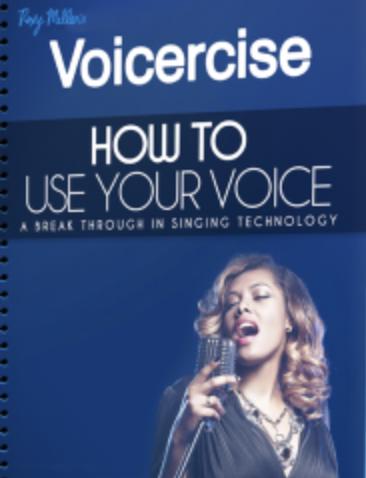
Voicercise
Who is teaching: Amanda Ambrose, Naomi T. Kaye, Roxy Kerr
Volume included: 10 audio lessons, one video lesson
Specialties: Vocal muscle break-down and exercising
Price: $54.95
Course Approach
Voicerecise has existed for over 30 and follows the teaching method of Amanda Ambrose. Her daughter and granddaughter continued to own the school and teach the method.
The idea behind the course is that there are 8 muscles involved with singing, and one should simply do exercises for all of those, in order to get control over the voice.
Structure and content
The course begins with teaching a song, which is special. Usually courses start with warm up and exercises, explanation and teaching of all kinds, and then, if at all, teach a song. So this is a satisfying diving in feeling.
The video:
One video of the mom - Naomi TK, showing different exercises for different muscles which help produce a healthy voice.
The lessons are short - a few minutes long.
Best is to watch one exercise demonstration, then go to the relevant audio lesson and follow it, then go back to the video. The switch between audio and video is easy because the video is embedded on the same page as all the lessons.
The first lesson teaches what she calls "the lift" - and that's my badass face! Anyone who knows me has heard me rave about it, all good singers do it - so amen to that.
I am loooving the exercises
They start by just working out the muscles, very simple stretch and relax movements. Explaining the benefits of the exercises as she goes a long, and then speaking with the exercises, before singing - also great.
As I go through the lessons, it’s easies to stretch the vocal cords and I go higher easier, we haven’t done an old fashion warm up - only the muscle+speaking exercises!
Tongue exercises are unique, never seen them before.
Breathing: She doesn’t put the attention on breathing, but instead teaches to strengthen the diaphragm. I like that. Over concentrating on breathing can indeed cause subglottal pressure and inhaling with muscle tension.
Note1: The “coughing” exercise should be done very consciously of the feeling in the throat, so that the vocal cords don’t get tired. I am personally extra sensitive to air pressure, so doing this exercise was a lot for me. I needed to stop after 4-5 times. And as she says - also pay attention that you don’t hyperventilate, or you should pause.
Note2: while listening to the exercises, it's sometimes hard to make out what consonants are used. So make sure to check out the Manual blow the last lesson.
The exercises build on top of each other, so gradually you will be able to apply them all.
My experience
The audios and video are older than what we are used to, because they were made many years ago. I have to say: I like it. It’s like listening to music on a vinyl.
In general I feel affection towards the instructor, and I feel taken care of.
I enjoyed following the lessons because they are short and easy, and affective!
The only thing that worries me is that in some of the exercises it’s still possible to strain with other muscles, even though the exercise is removing tension quite efficiently. So it’s important for anyone to pay attention and not overdo anything, and stop if they feel discomfort in the throat. Maybe shorten the higher note or skip it altogether in the beginning.
After working all the muscles - it is magical. It already kinda was from the first exercise.
The speaking “words” become funnier with time, I loled while doing them. It was great to be silly and careless and I believe it makes the singing directly better.
Teaching style
The teacher sounds like those who would give you a home baked cookie after the lesson. She is kind, patient and smily, but at the same time she is decisive and confident, letting you know through the tone of her voice that you are in good hands and on the right track.
She gives examples from simple daily life, with hints of humor and some Silliness to go with it.
Another thing I love is that these are pretty much 8 exercises. Eight! And yet it covers all the active muscle of the vocal instrument. It’s short and to the point, practical and easy.
About Voicercise instructors
Amanda Ambrose is famed jazz singer and the founder of Voicercise. taught thousands of students privately and in workshops worldwide.
Amanda's daughter, Naomi T. Kaye is a widely celebrated Singing Coach and Talent Developer. She was trained by her mother to become a Voicercise program leader. She is a vocal and performance coach for around 30 years.
Both had successful careers in the music business, recording albums and performing including many world tours to Mexico, Europe, Canada and the Caribbean.
Voicrecise is a genrtaional business. Nowadays, Roxy Kerr (Naomi's daughter) is the 3rd generation owner and has been running the company for about 17 years, and 6 by herself.
Conclusion Voicercise
This course has been one of my favorites. Besides the fact that I get behind about 98% of their technical approach, it’s light and digestible. It’s short, you can go over it in one day, then repeat it the next. I felt significant improvement from the very first exercise.
Even though the course is short in volume - it is complete. You have gone over the entire instrument and gave every part of it a task. Of course there's always room to dive deeper - but this is a fantastic kit, if you will, to get the whole instrument to work in a healthy way.
Plus, it’s relatively inexpensive, so I would recommend anyone to give this a spin.
Perks of Voicercise
No longer a little mouse...
Maybe you feel it's time to stop shushing your own voice. My weekly 'Belting Mouse' mail shows you how to. It gets you on track with stories and insights from my life as a singer and that of my students.

For 'little mice' who are tired of squeaking and want to start belting...
The big picture
My own course will serve you no matter what technique you are working on. You'll always know what to work on, at any stage during your journey and practice session.
A tiny word of caution
While I acknowledge that different teachers teach different techniques sometimes, I do consider the matter of vocal warm up crucial, and have a rather strong opinion about it. Not all teachers agree with me on how to warm up (which is fine!) but I’ll give you my strong recommendation here.
My recommendation: No matter what course you take, and what you are practicing with your voice - make sure you start your singing on any given day with a gradual warm-up. At least a couple of SOVT exercises (singing first on a vocal consonant, such as lip trills, rolled r or ng) starting with a short range (not more than 5 notes up and down, preferably 3 or less). More than a couple of exercises is even better, without over-doing it, if you have a lot of exercises in the course to work with. In any case, I wouldn’t jump straight into singing with vowels.
Short review of each online singing course
Course name | Bottom line |
|---|---|
Internalize the technqiue long term, benefit from live Q&A | |
How to sound like X? From the ground up | |
Extreme singing, bridging to the head voice and belt techniques | |
Fundamental but deep and dedicated vocal progress | |
Thorough anatomical and kinaesthetic understanding of the voice | |
Effective "instant pot" workout for the entire instrument | |
Foundational singing skills, vocal range, pitch training game | |
Cell | Enter your text here... |
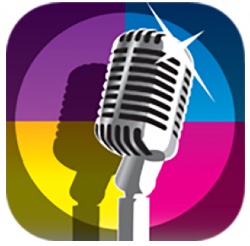
Do you want a second opinion on online courses? Here's a review of a colleague of mine of this wonderful blog - middermusic.com
No longer a little mouse...
Maybe you feel it's time to stop shushing your own voice and take your desire to sing serious. My weekly 'Belting Mouse' mail shows you how. It gets you on track with stories and insights from my life as a singer and that of my students.

For 'little mice' who are tired of squeaking and want to start belting...
How to use a singing course in combination with voice lessons
I believe an online singing course can have a healthy place on the menu of a singer/ singing student. In the tool box of online singing lessons it can be the main course (pun intended, so in that case singing apps would be the aside).
Let me speak for my own online singing course, even though I personally believe it applies to all courses. But it will be up to the course creators to indicate how their courses should be used.
Every time you have a lesson with a voice teacher, one-on-one, you learn a bunch of stuff. Hopefully you have identified what should be your main focus for the near future:
- Is it your breath control?
- Is it your posture?
- Is it evening out the quality of your voice throughout the range?
Take one focal point from your lesson at a time. Use the system of learning taught in the course to improve that focal point, then move on to the next. Don't go back for another lesson until you have made satisfying progress with the material you were given in the lesson.
Exception: if you feel lost in the process, and not sure what is going wrong or right, you are probably still in the stage of building your vocal awareness. You should contact your teacher and ask for guidance, or go back to another lesson if you feel the need for outside feedback.
Frequently Asked Questions
What makes a good online singing course?
A good online singing course offers structured lessons that balance theory with guided practice. It should include vocal exercises, explain the “why” behind each concept, and provide feedback opportunities or ways to measure progress. The best ones also address mindset, body awareness, and healthy technique.
Can online singing courses replace private lessons?
No, but they can complement them effectively. Online courses give you access to structured, repeatable material that strengthens what you learn in private lessons. They also help you stay consistent and understand the broader system behind vocal improvement.
How can I get the most out of an online singing course?
Treat it as part of your regular vocal routine. Follow the order of lessons, apply the exercises daily, and reflect on progress. Combine the course with mindful bodywork, relaxation, and, if possible, occasional feedback from a qualified teacher.
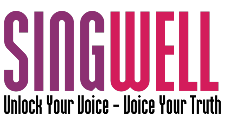
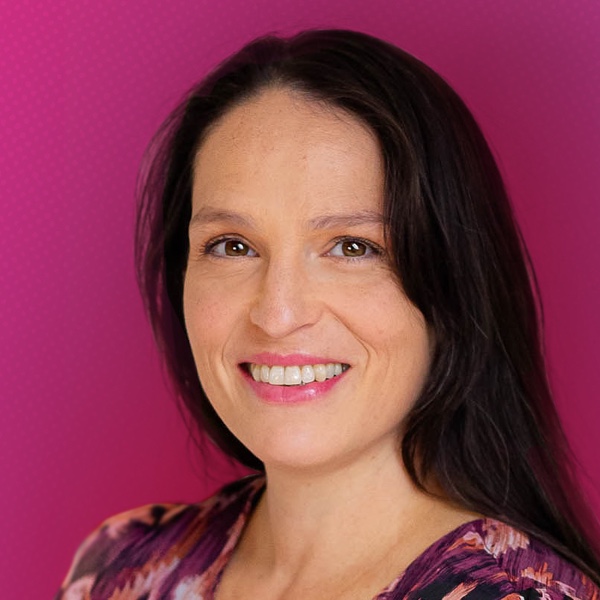
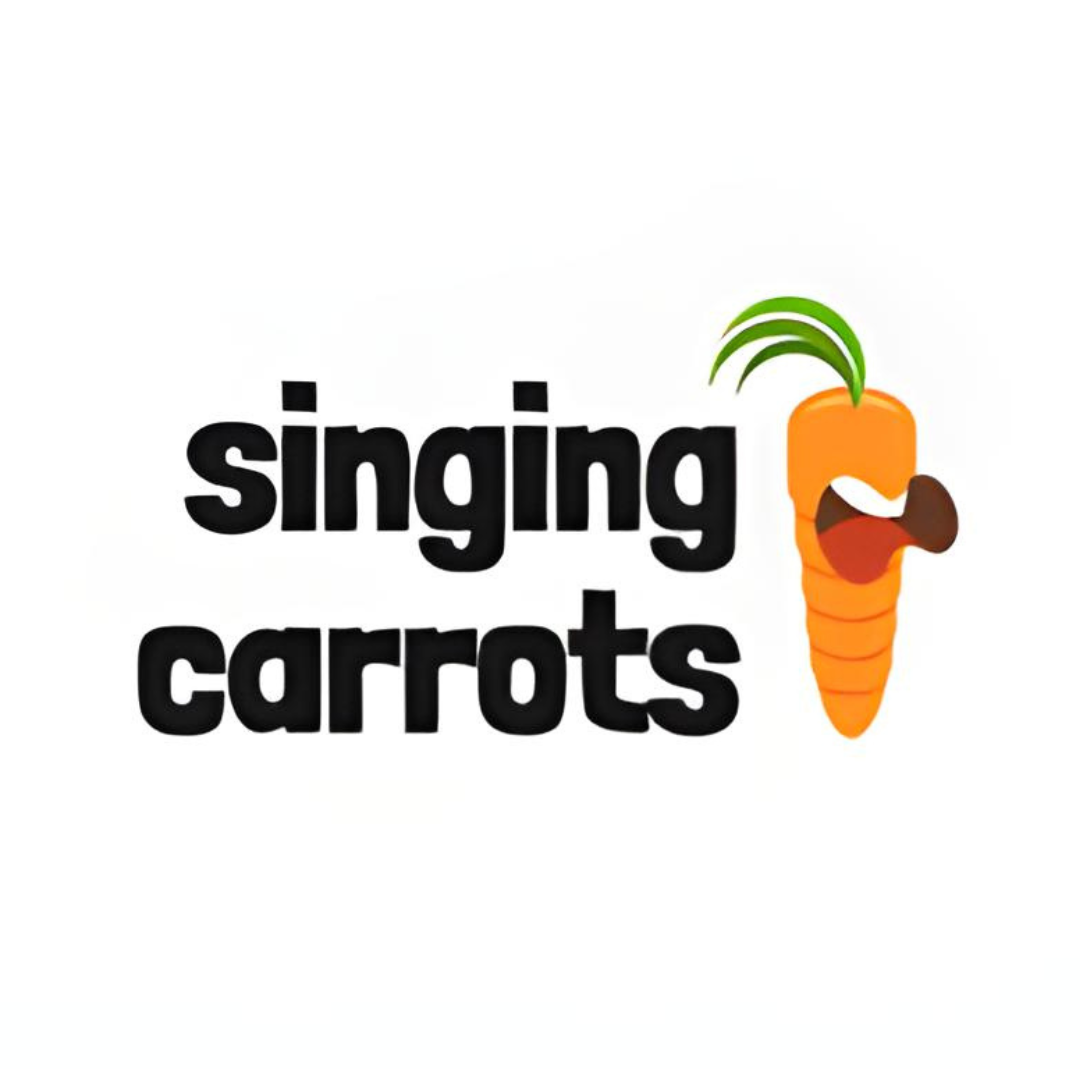
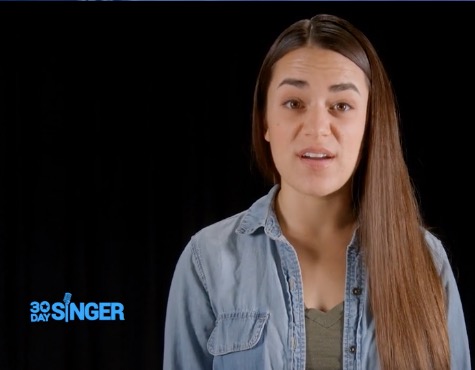
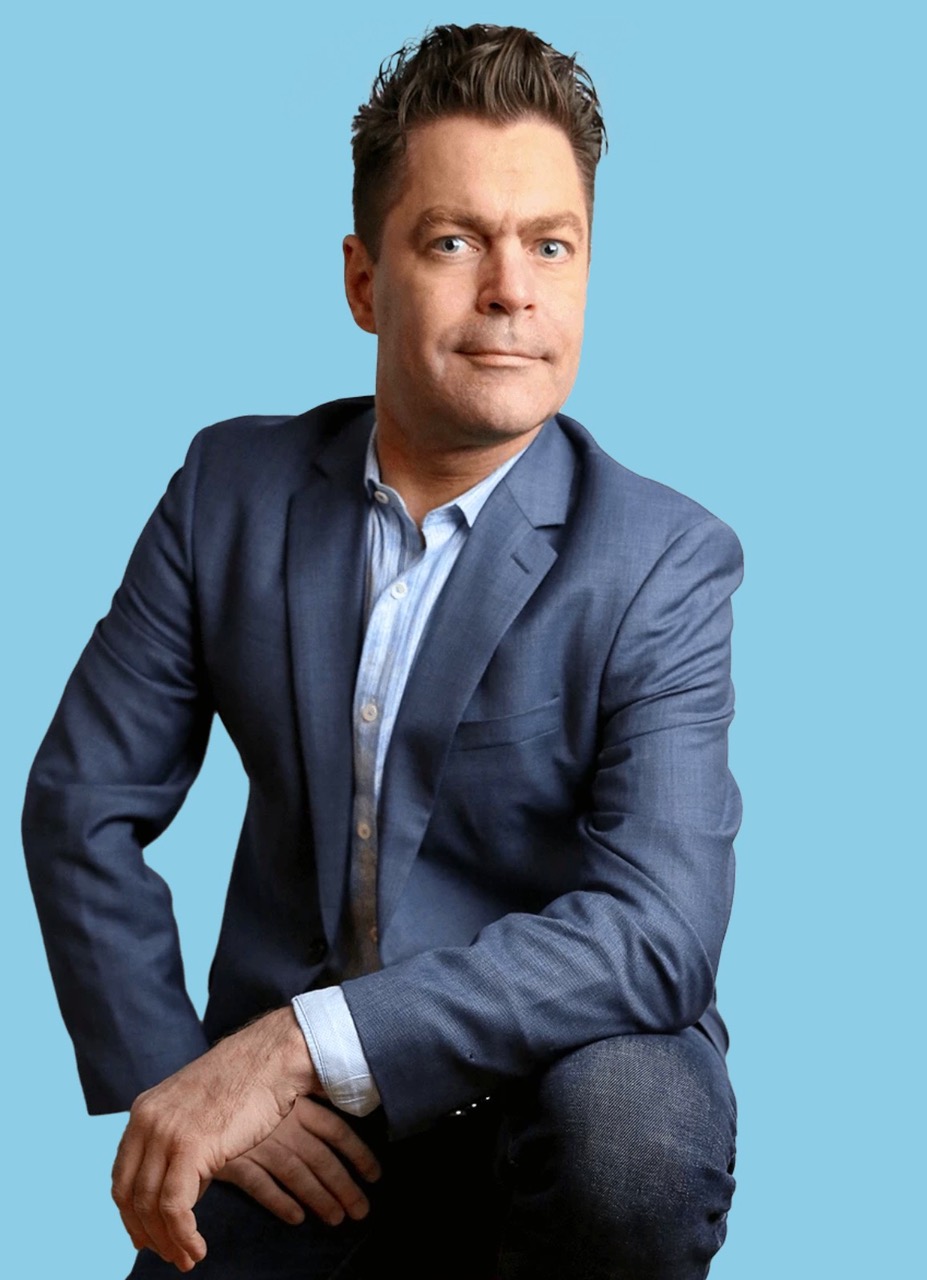
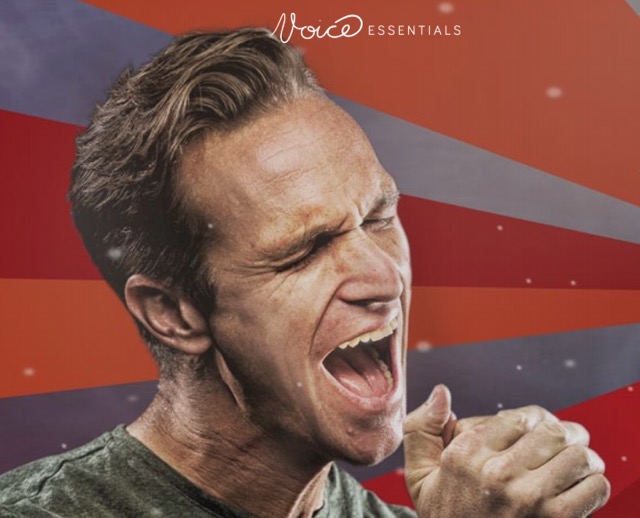
I love this vocals an i want to obtain greatness with this
Biggest singer bana sakti h
Choosing the best online singing course is a significant step towards nurturing your vocal talent and achieving your singing goals. It’s essential to consider factors such as course content, instructor expertise, student reviews, and personal compatibility with the teaching style.
I do afro swings
I have gone through the material a bit and I can definitely say (from my experience with other singing courses) that this program (https://bit.ly/3DtJpwa) is definitely worth the money and on par with other singing lessons.
Thanks for the input, Casey. I have reviewed Singorama, but unfortunately it hasn’t made it to my top choices…I’m glad it helped you, though 🙂
Hi